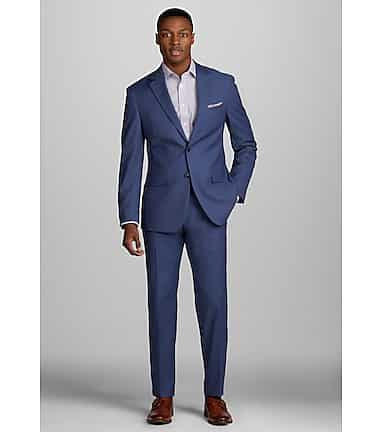Recognizing the Tailoring Process: From Textile Choice to Last Fitting for the Ideal Wardrobe
The customizing procedure is a complex interplay of art and scientific research, beginning with the crucial decision of fabric choice and finishing in the specific modifications of last installations. Each textile kind brings special high qualities that influence not just the visual charm but also the garment's durability and suitability for various occasions.
Value of Material Selection
Selecting the right fabric is vital in the customizing procedure, as it straight affects the comfort, resilience, and overall visual of the last garment. The option of textile sets the structure for the garment's performance, capability, and design. Various materials have one-of-a-kind properties, such as breathability, stretch, and weight, which can substantially affect how the garment drapes and fits the body.

A customized piece made from a proper textile not just showcases craftsmanship yet additionally raises the user's self-confidence. Consequently, comprehending the subtleties of textile option is extremely important for any tailoring venture. It makes sure that the end product not only satisfies the aesthetic needs of the client yet also aligns with practical requirements, consequently attaining an unified balance between type and function in the tailored wardrobe.
Kinds Of Fabrics and Their Usages
Recognizing the numerous kinds of fabrics offered is essential for making educated decisions during the tailoring process. Each textile has one-of-a-kind features that determine its suitability for specific garments and occasions.
Its versatility permits it to be customized into everything from shirts to outfits. Its all-natural elasticity assists garments maintain shape over time.
Silk radiates deluxe and is light-weight, making it excellent for eveningwear and delicate shirts; however, it needs careful handling because of its delicacy. Linen, with its textured coating, is a prominent selection for warm climates, giving a crisp and airy feel, yet it wrinkles easily, which might influence the garment's appearance.
Synthetic materials, such as polyester and nylon, offer sturdiness and resistance to wrinkles, making them suitable for day-to-day wear and active clothes. Comprehending these textile kinds and their properties enables much better decision-making, guaranteeing that each tailored item not just fits well however also straightens with the designated objective and celebration.
The Tailoring Methods Explained
The art of customizing relies upon a selection of techniques that transform textile into well-fitted garments. Central to this procedure is pattern drafting, where a dressmaker develops templates based upon the customer's measurements and preferred style. This preliminary action makes sure that the garment will certainly fit the user effectively before any type of cutting occurs.
When patterns are developed, cutting methods enter into play. Precision is critical as inaccuracies can bring about misfitting garments. Tailors usually make use of numerous reducing techniques, such as single-layer reducing for complex styles and multiple-layer cutting for effectiveness on basic patterns.
Basting is an additional essential method, permitting dressmakers to briefly sew textile items together for an initial fitting (bespoke tailor perth). This approach supplies the opportunity to evaluate the view website drape and general silhouette before last sewing
Seaming methods, consisting of flat-felled joints and French seams, enhance the garment's resilience and aesthetic appeal. Tailors also utilize methods such as interfacing and cushioning to supply structure and shape to particular locations, like collars and shoulders.
Finally, finishing strategies, including hemming and side ending up, ensure the garment's longevity while providing a polished look. Together, these strategies develop the foundation of effective customizing, resulting in exquisite, tailor-made clothing.

Fitting Changes and Considerations
After the initial customizing methods have been used and the garment is constructed, suitable adjustments come to be paramount to achieving the ideal fit. These modifications address numerous aspects of the garment, guaranteeing it contours to the user's physique and improves overall look.

The surge of trousers is an additional crucial aspect; it must rest pleasantly over the hips without creating discomfort, enabling ease of motion. Hemming lengths for both pants and skirts need to mirror the wearer's favored design while respecting proportions.
In addition, interest should be offered to the rear of the garment, ensuring that there are no unattractive pulls or excess textile - custom suits perth. Each adjustment should be meticulously considered, as also small alterations can dramatically impact the total fit and visual of the tailored piece, inevitably resulting in a closet that shows self-confidence and elegance
Maintaining Your Tailored Wardrobe
Constantly comply with the treatment label directions, which might suggest dry cleansing for fragile materials or maker cleaning for more resilient materials. Prevent frequent laundering, as this can use down the textile and change the garment's form.
Storage is just as essential; usage have a peek here cushioned wall mounts for coats and layers to maintain shoulder structure, and shop pants folded up neatly or hung to avoid creasing. Protect garments from direct sunshine, which can discolor colors and damage fibers.
In addition, periodic evaluations for minor repair work can avoid larger issues. Examine for loosened switches, fraying seams, or signs of moth damage, resolving these problems immediately to preserve the garment's integrity.
Finally, consider seasonal rotation. Putting on tailored pieces in small amounts you can try these out enables materials to recuperate, expanding their life expectancy. By carrying out these maintenance techniques, you can make sure that your customized garments continue to be as beautiful as the day you initially used them, improving your perfect closet for several years ahead.
Verdict
The customizing procedure, including material selection, skilled methods, and exact suitable modifications, plays an important role in producing garments that enhance both convenience and style. Each phase adds to the overall efficiency of the end product, ensuring that apparel not only fits well but likewise shows specific identification. Comprehending the significance of upkeep prolongs the life of customized garments, solidifying their worth in a well-curated wardrobe. An extensive approach to tailoring finishes in a refined and positive appearance.